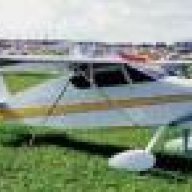-
Posts
78 -
Joined
-
Last visited

Timm427 replied to Timm427's topic in Aircraft Building and Design Discussion

Timm427 replied to Timm427's topic in Aircraft Building and Design Discussion

Timm427 replied to Timm427's topic in Aircraft Building and Design Discussion

Timm427 replied to Timm427's topic in Aircraft Building and Design Discussion

Timm427 replied to Timm427's topic in Aircraft Building and Design Discussion

Timm427 replied to Timm427's topic in Aircraft Building and Design Discussion

Timm427 replied to Bubbleboy's topic in Aircraft Building and Design Discussion

Timm427 replied to old man emu's topic in AUS/NZ General Discussion

Timm427 replied to Timm427's topic in Just Landed - Welcome

Timm427 replied to Timm427's topic in Just Landed - Welcome

